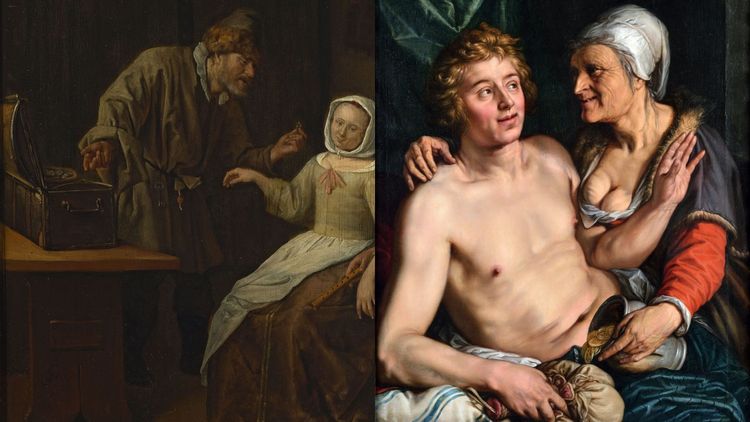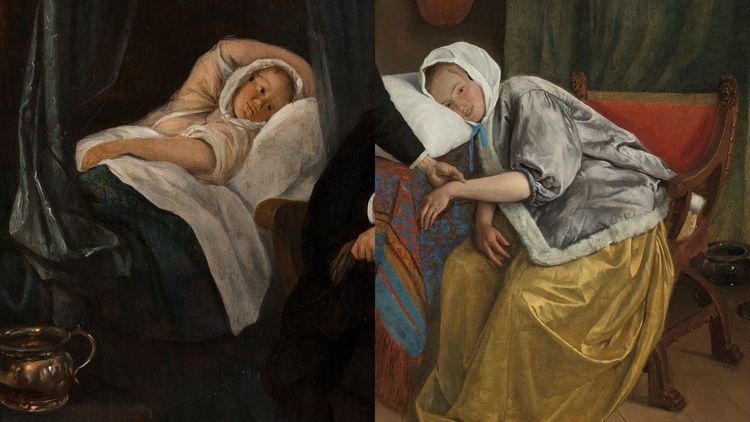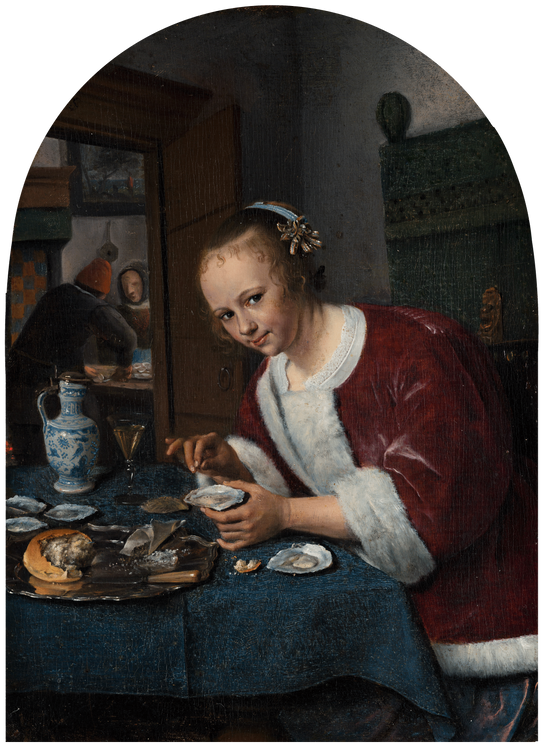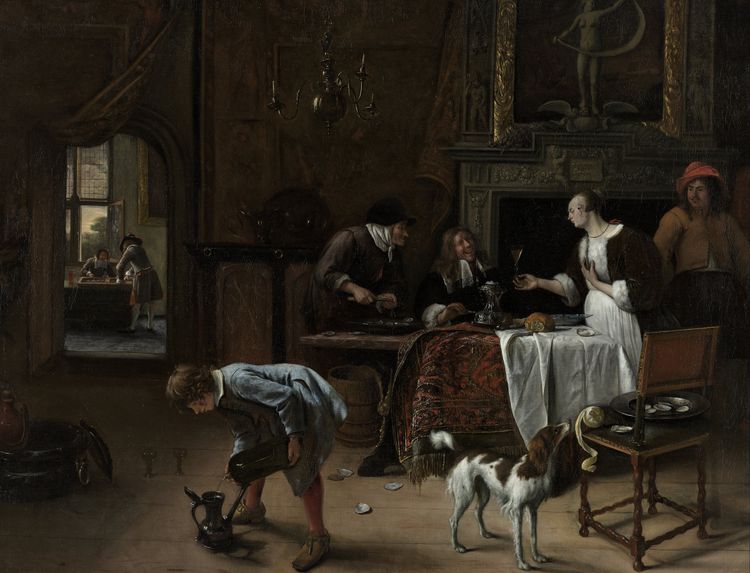
Jan Steen
He is one of the most famous Dutch painters: Jan Steen. However, if it were up to Jan's father, his son would not have become a painter but a brewer. The cozy chaos of a tavern is never far from Steen's work. His paintings are lively, filled with symbolism; Steen painted with a keen eye for the human condition. His humor still tickles us today, as can be seen in the fun part of art.
The Life of Jan Steen
Jan Steen was born in 1626 or 1627 – we don't know the exact date. He was born in Leiden. His parents were Havik Janszoon Steen and Lijsbet Wijnbrantsdochter Capiteyns, prosperous Leiden citizens, but they were Catholics in a time when Protestantism was dominant. Jan was their eldest son and, therefore, the expected successor to his father, who was a brewer. However, as a child, it became evident that Jan had a remarkable talent for drawing and painting and somewhat less inclination for life in the brewery.
Several aspects of Jan Steen's life remain unclear. The lack of knowledge about his birthdate is due to his Catholic background. Catholic baptism records from that time are not preserved because Catholicism was suppressed in Holland. Nevertheless, Jan Steen remained devoted to his faith throughout his life.
We are also uncertain about who taught Jan Steen to draw and paint as a child. Names associated with his early training include Adriaen Brouwer and Adriaen van Ostade, both from Haarlem. Jan Steen had a family connection to Jan Lievens. What is certain is that he knew Jan van Goyen well in his young adult years. He married Jan van Goyen's daughter, Grietje, in 1649. Grietje van Goyen was also a friend of Jan's sister, so they might have met through her. Alternatively, Jan Steen may have been an apprentice to Jan van Goyen and fell in love with the beautiful Grietje.
Jan and Grietje moved to The Hague after their marriage, where their eldest children were born. In 1654, they moved to Delft, where Jan was supposed to take over a brewery – thus, he was following in his father's footsteps. However, he didn't seem suited for this profession, and the brewery quickly went bankrupt. Financial troubles haunted Jan Steen throughout his life. Later, he owned a hospitality establishment in his birthplace, Leiden. After 1660, he moved to Haarlem, where he achieved moderate success as an artist.
Grietje passed away in 1669. In 1670, Jan moved into his parents' house in Leiden, which he inherited as the eldest son. In 1673, the widower Jan Steen married Maria van Egmond, who was also a widow. With her, he had a seventh child in 1674.** Jan Steen's children often posed for his paintings**, and their faces appear in his works. This allowed Jan Steen to avoid paying for expensive models, turning the art of painting into a kind of family business. His income, however, dwindled after 1674 when the economy of Holland faced hardships. Jan Steen passed away in 1679 and was buried in the Pieterskerk in Leiden.
Works of Jan Steen
Jan Steen was a prolific painter. Hundreds of paintings and drawings are attributed to him. During his lifetime, Jan Steen certainly earned money from the sale of his work, but he didn't become wealthy. Perhaps, in part because of this and his professional background as a brewer and hospitality entrepreneur (albeit not a very successful one), he remained familiar with the life of ordinary people. His paintings depict the lives of ordinary 17th-century people, providing a unique glimpse into life in Dutch cities at that time.
Some themes from Jan's personal life are reflected in his work. Jan was a Catholic and remained so throughout his life, even though it would have been more socially advantageous to convert to Protestantism for success. This reflects his principled nature and loyalty to his family's tradition. The conflict between Catholics and Protestants is subtly portrayed in paintings like "The Feast of Epiphany" and "Saint Nicholas' Day." Here, we also see Jan Steen's satirical humor. He enjoyed poking fun at people but did not caricature them. His work exudes warmth and genuine interest. He did not spare himself; on the contrary, he appears in several of his paintings, usually not in a heroic role.
Not surprisingly for a brewer, alcohol plays a role in Jan Steen's work. Descriptions of his life suggest that the painter was not averse to alcohol himself. The consequences of drunkenness are vividly depicted in paintings like The Effects of Intemperance and The Drunken Couple, but alcoholic beverages flow generously in other paintings as well.
Jan Steen also painted portraits on commission and biblical scenes, but his genre pieces are the most famous and arguably the most interesting due to their liveliness, self-deprecating humor, and realism.
Jan Steen & the fun part of art
The fun part of art takes you into the daily life of the 17th century, as beautifully captured by Jan Steen. The symbolism in his genre pieces tells us much about the society of that time. Watch the videos where all the details are explored. This way, you get to know the paintings up close and a piece of our history. Jan Steen had a keen eye for satire that looked not only around him but also ahead. That's why his paintings still resonate with us today. That is the fun part of art.





